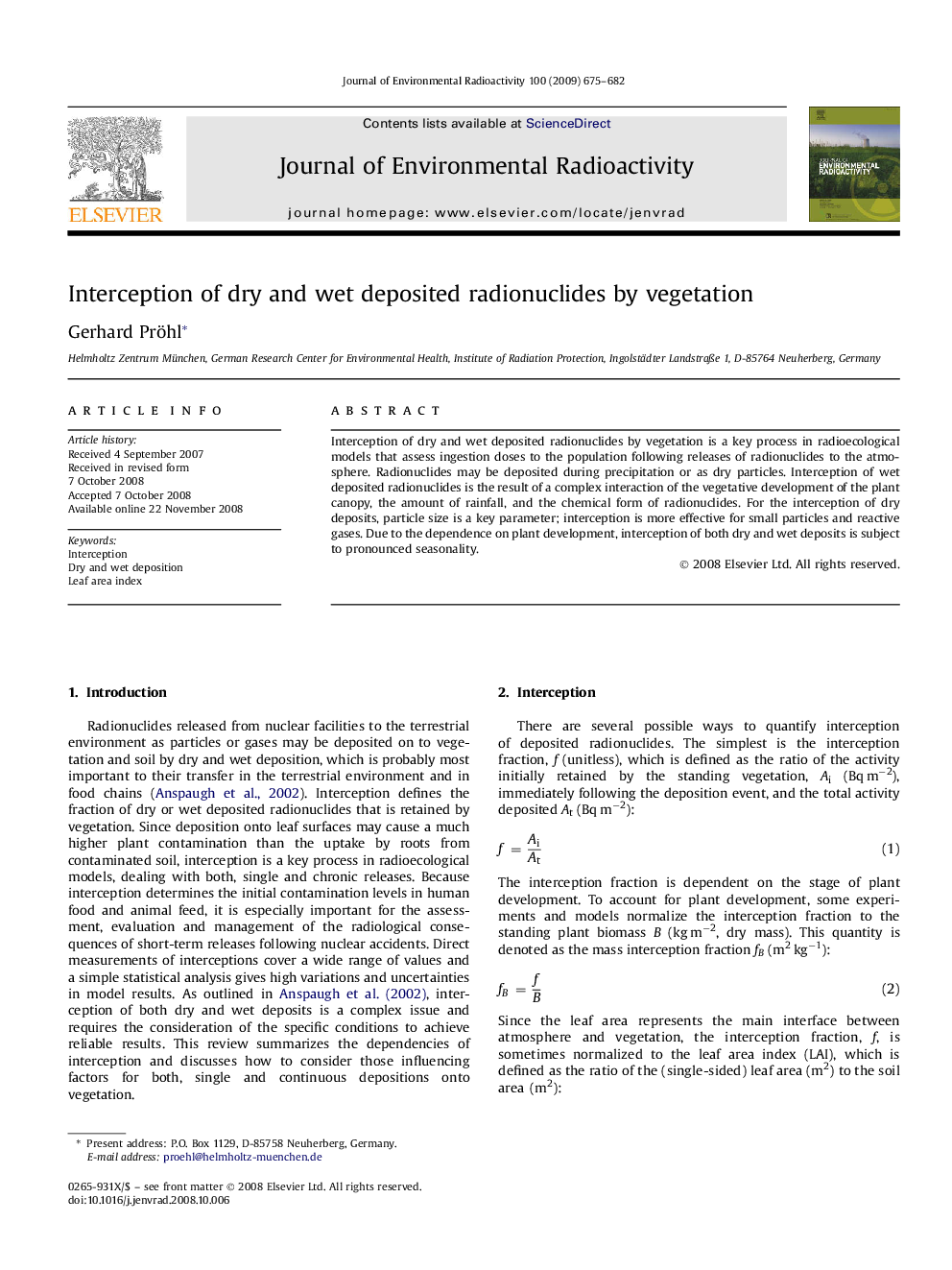| Article ID | Journal | Published Year | Pages | File Type |
|---|---|---|---|---|
| 1739031 | Journal of Environmental Radioactivity | 2009 | 8 Pages |
Abstract
Interception of dry and wet deposited radionuclides by vegetation is a key process in radioecological models that assess ingestion doses to the population following releases of radionuclides to the atmosphere. Radionuclides may be deposited during precipitation or as dry particles. Interception of wet deposited radionuclides is the result of a complex interaction of the vegetative development of the plant canopy, the amount of rainfall, and the chemical form of radionuclides. For the interception of dry deposits, particle size is a key parameter; interception is more effective for small particles and reactive gases. Due to the dependence on plant development, interception of both dry and wet deposits is subject to pronounced seasonality.
Related Topics
Physical Sciences and Engineering
Energy
Nuclear Energy and Engineering
Authors
Gerhard Pröhl,
